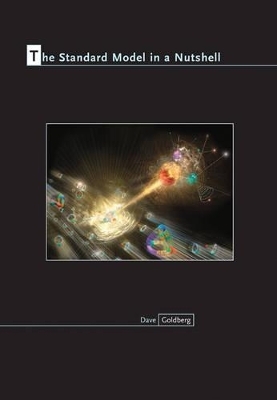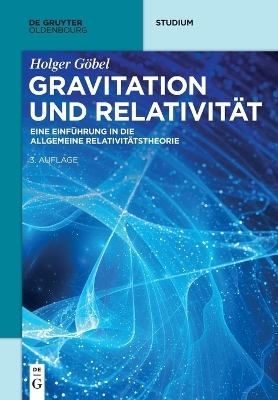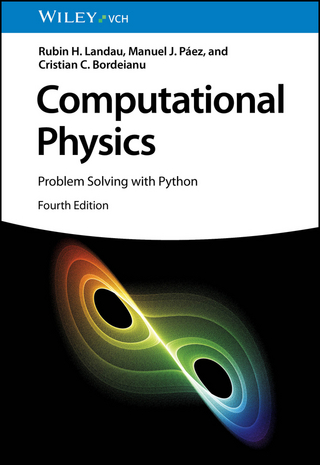
The Standard Model in a Nutshell
Princeton University Press (Verlag)
978-0-691-16759-6 (ISBN)
A concise and authoritative introduction to one of the central theories of modern physics For a theory as genuinely elegant as the Standard Model--the current framework describing elementary particles and their forces--it can sometimes appear to students to be little more than a complicated collection of particles and ranked list of interactions. The Standard Model in a Nutshell provides a comprehensive and uncommonly accessible introduction to one of the most important subjects in modern physics, revealing why, despite initial appearances, the entire framework really is as elegant as physicists say. Dave Goldberg uses a "just-in-time" approach to instruction that enables students to gradually develop a deep understanding of the Standard Model even if this is their first exposure to it. He covers everything from relativity, group theory, and relativistic quantum mechanics to the Higgs boson, unification schemes, and physics beyond the Standard Model. The book also looks at new avenues of research that could answer still-unresolved questions and features numerous worked examples, helpful illustrations, and more than 120 exercises.
* Provides an essential introduction to the Standard Model for graduate students and advanced undergraduates across the physical sciences* Requires no more than an undergraduate-level exposure to quantum mechanics, classical mechanics, and electromagnetism* Uses a "just-in-time" approach to topics such as group theory, relativity, classical fields, Feynman diagrams, and quantum field theory* Couched in a conversational tone to make reading and learning easier* Ideal for a one-semester course or independent study* Includes a wealth of examples, illustrations, and exercises* Solutions manual (available only to professors)
Dave Goldberg is professor of physics at Drexel University, where he also serves as associate dean for research and graduate studies at the College of Arts and Sciences. He is the author of The Universe in the Rearview Mirror: How Hidden Symmetries Shape Reality and the coauthor of A User's Guide to the Universe: Surviving the Perils of Black Holes, Time Paradoxes, and Quantum Uncertainty.
Preface for Instructors ix Acknowledgments xi Introduction xiii Table of Symbols xv 1 Special Relativity 1 1.1 Galileo 2 1.2 Vectors and Tensors 3 1.3 Foundations of Relativity 13 1.4 Spacetime 15 1.5 Relativistic Dynamics 19 2 Scalar Fields 24 2.1 The Principle of Least Action 25 2.2 Continuous Fields 29 2.3 The Klein-Gordon Equation 32 2.4 Which Lagrangians Are Allowed? 33 2.5 Complex Scalar Fields 35 3 Noether's Theorem 43 3.1 Conserved Quantities for Particles 44 3.2 Noether's First Theorem 46 3.3 The Stress-Energy Tensor 49 3.4 Angular Momentum 52 3.5 Electric Charge 53 3.6 Digression: Inflation 54 4 Symmetry 61 4.1 What Groups Are 62 4.2 Finite Groups 63 4.3 Lie Groups 66 4.4 SU(2) 70 4.5 SU(3) 74 5 The Dirac Equation 79 5.1 Relativity and Quantum Mechanics 80 5.2 Solutions to the Dirac Equation 86 5.3 The Adjoint Spinor 88 5.4 Coordinate Transformations 90 5.5 Conserved Currents 93 5.6 Discrete Transforms 97 5.7 Quantum Free-Field Theory 100 6 Electromagnetism 109 6.1 A Toy Model of Electromagnetism 109 6.2 Gauge Transformations 112 6.3 Interpreting the Electromagnetic Lagrangian 116 6.4 Solutions to the Classical Free Field 122 6.5 The Low-Energy Limit 123 6.6 Looking Forward 126 7 Quantum Electrodynamics 129 7.1 Particle Decay 130 7.2 Scattering 140 7.3 Feynman Rules for the Toy Scalar Theory 148 7.4 QED 153 8 The Weak Interaction 164 8.1 Leptons 165 8.2 Massive Mediators 168 8.3 SU(2) 171 8.4 Helicity 177 8.5 Feynman Rules for the Weak Interaction 180 9 Electroweak Unification 184 9.1 Leptons and Quarks 184 9.2 Spontaneous Symmetry Breaking 192 9.3 The Higgs Mechanism 195 9.4 Higgs-Fermion Interactions 199 9.5 A Reflection on Free Parameters 202 10 Particle Mixing 205 10.1 Quarks 207 10.2 Neutrinos 216 10.3 Neutrino Masses 222 11 The Strong Interaction 229 11.1 SU(3) 229 11.2 Renormalization 238 11.3 Asymptotic Freedom 245 12 Beyond the Standard Model 253 12.1 Free Parameters 253 12.2 Grand Unified Theories 255 12.3 Supersymmetry 259 12.4 The Strong CP Problem 264 12.5 Some Open Questions 266 Appendix A Spinors and c-Matrices 271 Appendix B Decays and Cross Sections 274 Appendix C Feynman Rules 277 Appendix D Groups 281 Bibliography 283 Index 291
| Erscheinungsdatum | 01.03.2017 |
|---|---|
| Reihe/Serie | In a Nutshell |
| Zusatzinfo | 9 halftones. 66 line illus. 12 tables. |
| Verlagsort | New Jersey |
| Sprache | englisch |
| Maße | 178 x 254 mm |
| Gewicht | 851 g |
| Themenwelt | Naturwissenschaften ► Physik / Astronomie |
| ISBN-10 | 0-691-16759-1 / 0691167591 |
| ISBN-13 | 978-0-691-16759-6 / 9780691167596 |
| Zustand | Neuware |
| Haben Sie eine Frage zum Produkt? |
aus dem Bereich


